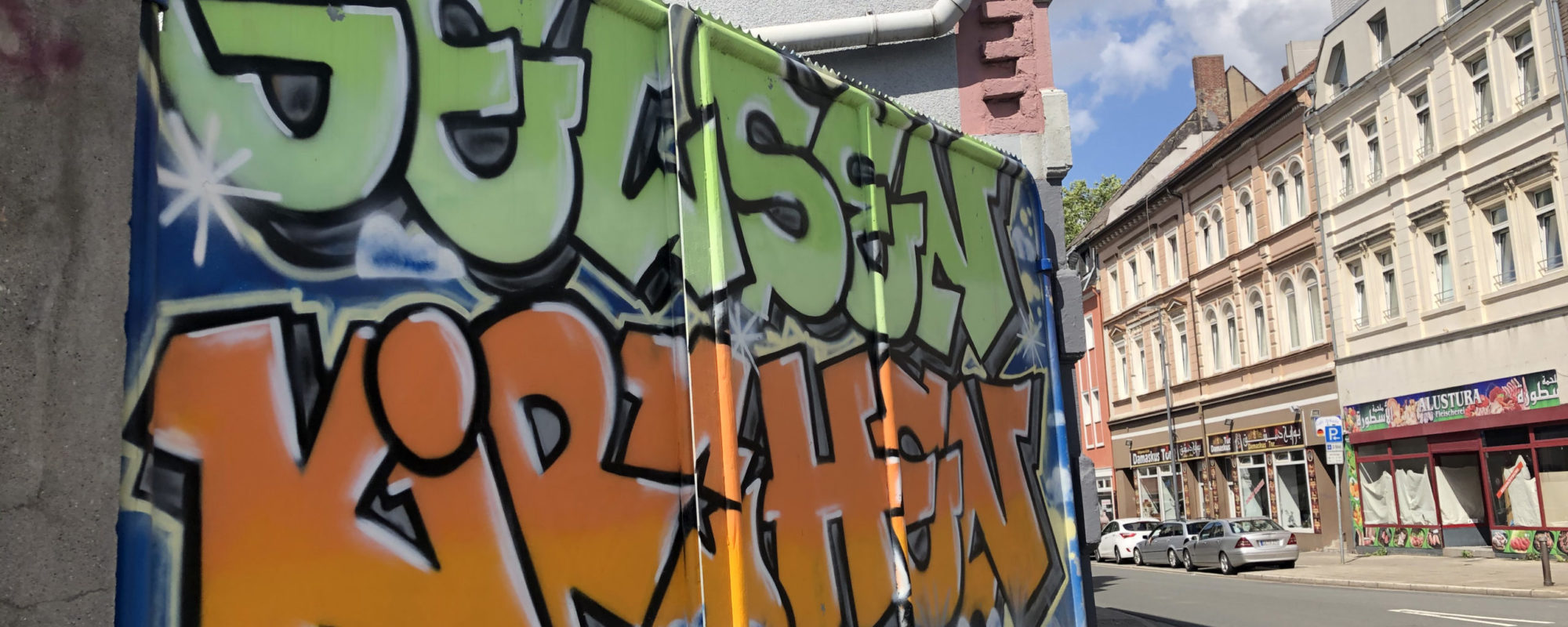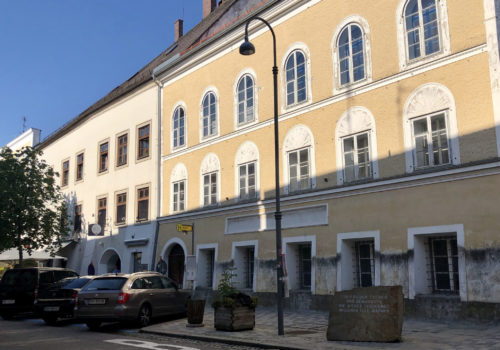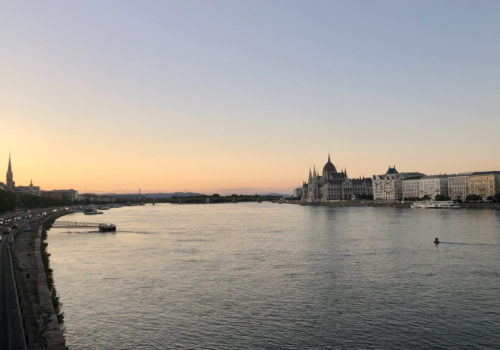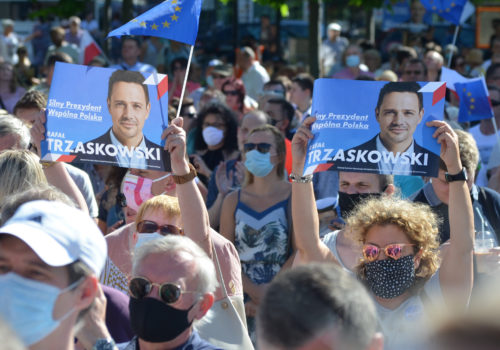GELSENKIRCHEN, Germany — The late August sun warmed my shoulders and a light summer breeze wafted by as I stood on a makeshift stage sporting headphones and massive goggles (and a face mask, of course). Virtually, I was somewhere else entirely: A thousand feet below the Earth’s surface in one of the many coal mines that have shaped this city and region. Carts overflowing with jet-black coal rested on tracks covered with dust and dirt; the rushing sounds of steam and distant clattering of pickaxes filled my ears. Using a controller, I walked through the miners’ break room and went down to where the coal was mined, listening to testimonies from various figures along the way.
The coal-mining experience was part of Germany’s biggest-ever virtual reality festival, a three-day event held across a series of vacant buildings in an up-and-coming part of town: An old apothecary, empty apartments, a parking garage. Locals and tech-savvy hipster types mingled in line for the various attractions, ranging from beach scenes and games to an immersive exploration of the effects of depression. In an outdoor gathering space in a back courtyard, festival staff and attendees watched keynote talks on big television screens and typed away on their laptops.
If this had been Berlin, with its vibrant start-up scene and hordes of tech staffers, such an event would have been unremarkable. But this was taking place in a city of 260,000 in the western Ruhr region—a place most often known for its high unemployment and low incomes, one about which jokes are made, and whose identity is inextricably tied to the mines I experienced through those VR goggles. Gelsenkirchen was once one of Germany’s biggest coal mining cities in the heart of Europe’s biggest coal mining region. It’s been two years since the region’s last mine officially closed, but the history and culture of German coal country still play a big role in the identity and culture of people here.
That’s partly why that VR experience, sponsored by the regional broadcaster WDR, felt so important. It was a fitting metaphor for the promise and challenges of Gelsenkirchen, a way of embracing the past while looking toward the future—all in a place no one would expect. That afternoon combined two of the most recurrent threads of my impressions of the city: The extent to which its present is shaped by the heyday, then slow death, of its coal mining industry; and the desire to move past its reputation, to show the city can be innovative and open and future-oriented. That can be a tall order, as I learned during my time here—but there are many in town seeking to make things better, in ways big and small.
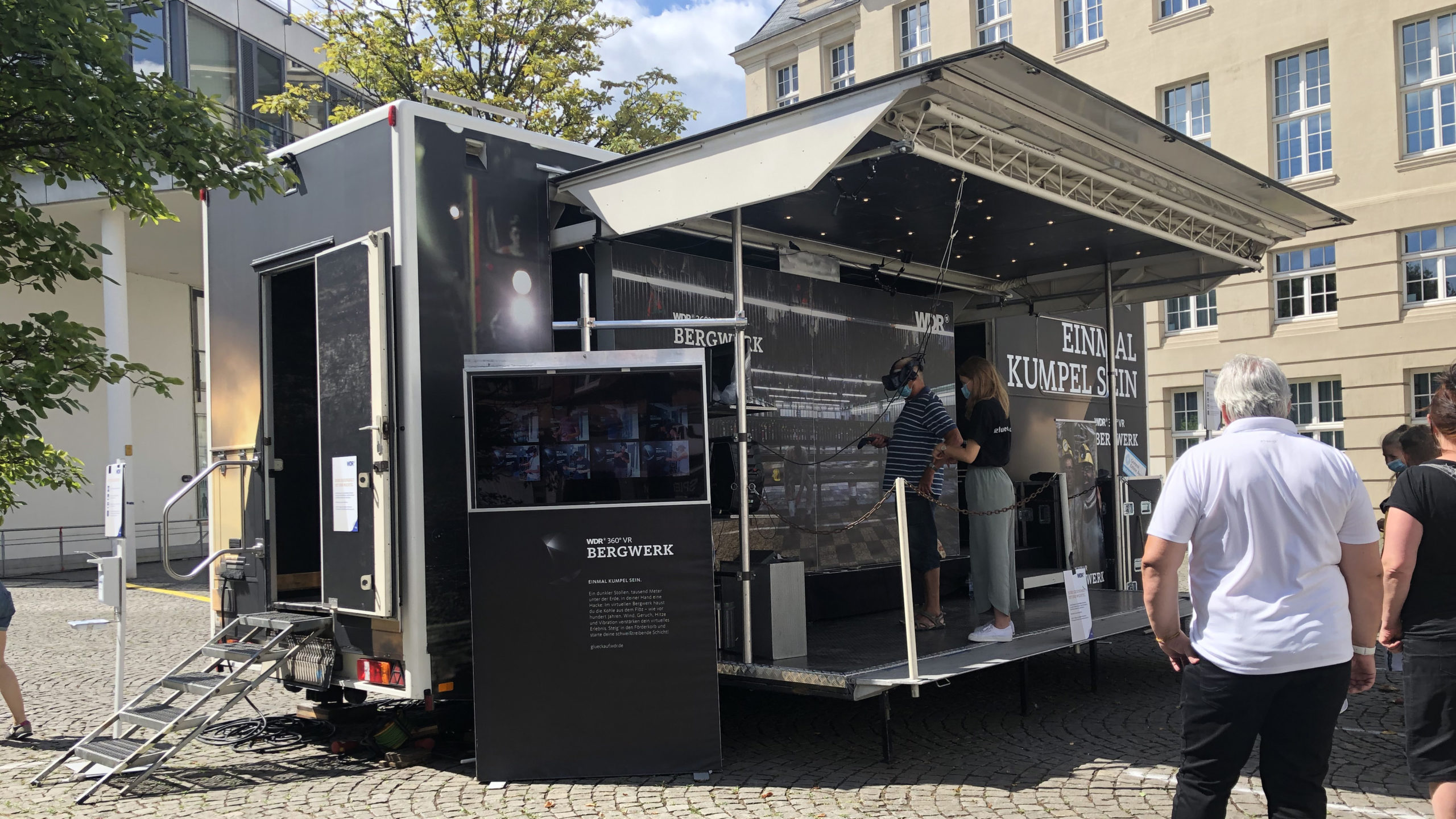
When I first mentioned to friends that I’d be spending a month in Gelsenkirchen as part of my fellowship project, the responses were mixed, sometimes verging on incredulous. Where my similarly extended stay in picturesque eastern Görlitz last summer elicited excitement and requests to visit, the response to Gelsenkirchen amounted to: But why? Really? A whole month?
That’s in large part because the city—and the Ruhr region, or Ruhrgebiet, writ large—has a major image problem. Gelsenkirchen is a municipality of superlatives, many of them negative: These days it’s known as the city with the lowest average income anywhere in Germany (€16,203), greatest unemployment (15 percent) and highest percentage of children living in poverty (41 percent). In a 2018 survey of the most livable cities in Germany, out of the 401 included, Gelsenkirchen came in at number 401. When people from other parts of the country picture the Ruhr region, they imagine dirty, grey, desolate scenes, trash on the ground and children going hungry, not a speck of green in sight, the epitome of a place that has undoubtedly seen better days.
The city is also superlative in another way, which is the initial reason I came: It’s the place where, during the 2017 federal elections, the populist far-right Alternative for Germany (AfD) got its highest vote share in all of western Germany (17 percent). Largely considered an eastern German phenomenon—the AfD wins upward of 35 to 40 percent in some areas, including Görlitz—the party also has small pockets of stronger support in western Germany. Gelsenkirchen is one of them. With local-level elections taking place on Sept. 13, the first since the height of the coronavirus crisis this spring, I wanted to understand the AfD’s appeal in a place far outside its strongest power centers.
What I found was complicated. I saw and heard things that confirmed certain stereotypes about the city, and which made it clear the city has legitimate problems that fuel support for the far-right party: With creating quality jobs and building up sustainable long-term industries; figuring out how to integrate its many newcomers; and improving its image outside the region.
But just as important were the ways in which Gelsenkirchen proves such stereotypes wrong, and the people working in ways big and small to improve the lives of Gelsenkircheners no matter when they arrived here. For every statistic that confirms its bad reputation, there’s another that counteracts and surprises anyone with pre-formed prejudices about Gelsenkirchen: The city has high unemployment, but is also the seventh-greenest big city in Germany. It has residents from more than 140 countries. It may not be well-known abroad, but ask any football fan about Gelsenkirchen’s team, Schalke 04—the second-largest club in Germany after FC Bayern—and they’ll immediately recognize it. No one tends to think of Gelsenkirchen as a thriving arts city, but the massive, glass-covered façade of its music theater has long been a point of pride.
“When visitors come from, say, Stuttgart or the Black Forest, they come with preconceived notions,” Markus Töns, a member of the Bundestag from the center-left Social Democrats (SPD), told me one afternoon at his dining room table. “People who live here are used to the fact that those from outside have a different expectation than what it’s really like on the inside.”
Like elsewhere, the AfD in Gelsenkirchen seems to be betting that those who are frustrated by recent developments in the city will turn to them. But most I spoke with said the party’s relative strength here has little to do with an inherently right-wing electorate. Rather, it’s still very much tied to a sense of protest and a desire to send a message to the long-reigning SPD—and a reaction to some of the longer-term changes the city has faced.
* * *
In Gelsenkirchen, the simpler, better time in some people’s minds is the one in which the coal and steel industries thrived and the city lived off the riches of its role as the heart of the Ruhr industry—and in which a sense of workers’ solidarity led to what residents described as a peaceful, cohesive social structure among the many nationalities that had settled here.
Before the Industrial Revolution “there was truly nothing here,” Volker Bruckmann told me one balmy evening in his back garden in Ückendorf, a diverse neighborhood in the city’s south that’s currently undergoing a major revitalization. Bruckmann is head of the Gelsenkirchen Heimat organization, a group devoted to fostering ties with the city’s history and traditions. “Gelsenkirchen was a village, and Ückendorf was only a collection of farmhouses until the middle of the 19th century—really not so long ago.”
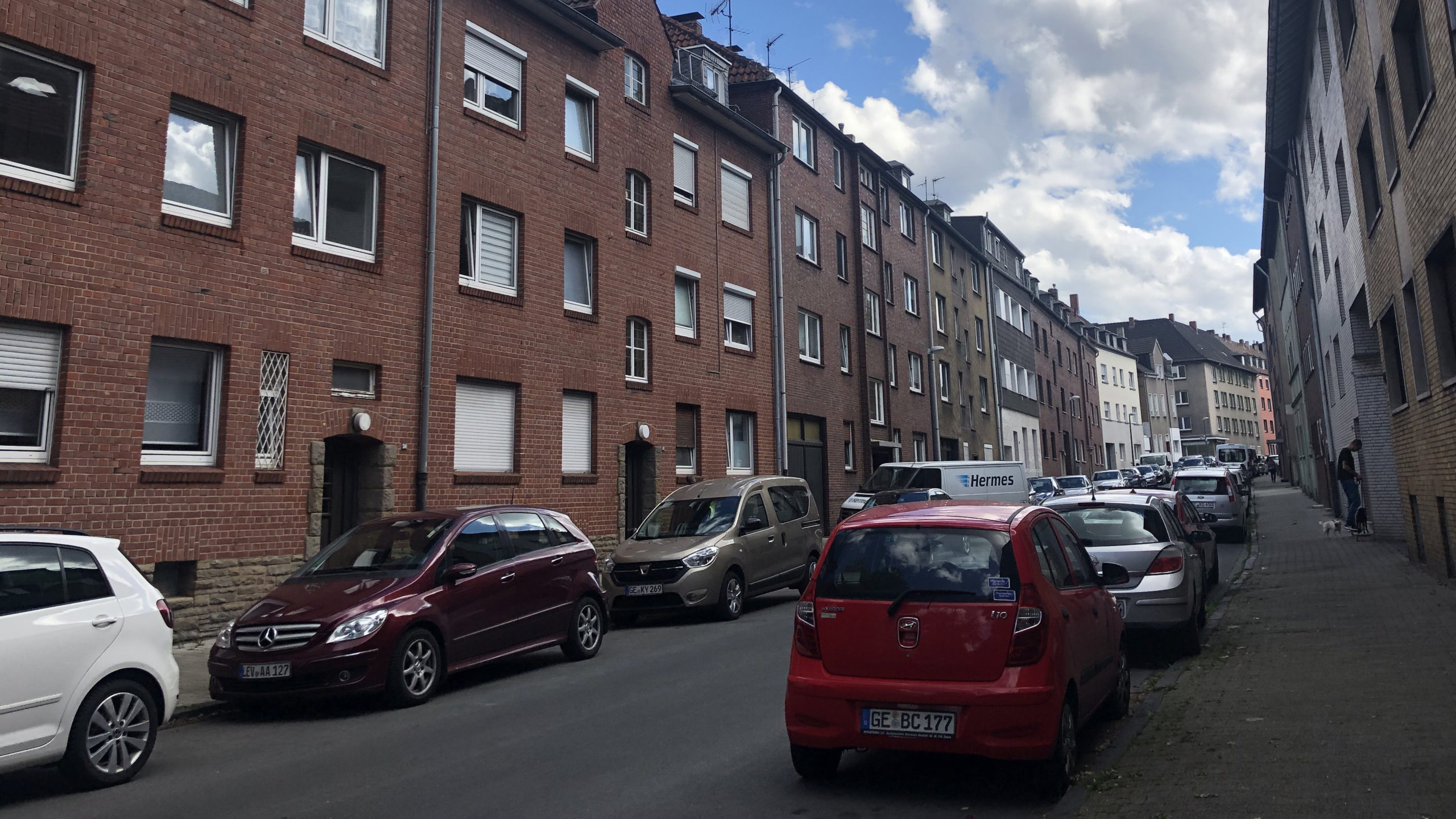
That changed nearly overnight in the mid-19th century when coal was discovered here: Seeking work and a better life, people came from across Germany and Europe to work in the mines. By the start of the 20th century, the city’s population had reached 100,000, and hit its peak of nearly 400,000 in the late 1950s. But things started to change in the 1960s: the mines began closing down one by one, some consolidating with other nearby mines until none were left.
The legacy of Gelsenkirchen’s role in mining and industry is everywhere. Over my weeks here, I picked up a different regional vocabulary: When coal miners wished their colleagues a safe trip back up to the surface, they said Glück auf, a phrase I encountered on the front of the Gelsenkirchen main train station, printed on face masks and in countless email and text message sign-offs. When miners went underground, they went unter Tage; one’s coal mining colleagues were Kumpels, and all the hardworking, working-class types were Malocher.
Although the mines are all closed today, characteristic mining towers and shafts still dot the skyline in Gelsenkirchen; several have been turned into new spaces. Nordstern, in the western part of the city, is now a park; Consol, in the east, has a theater and events space as well as a park filled with sculptures built from old mining parts; Hugo, in the north, now boasts a small museum and another events space.
Showing me around the Hugo mine site one afternoon, Klaus Herzmanatus, who spent 25 years working underground here, said this is a key part of the city’s heritage and identity. “So many people here have a connection to the coal industry,” he told me. “Countless families include someone who worked in coal… and we see that this tradition of sticking together, this connection, plays a big role in the city.”
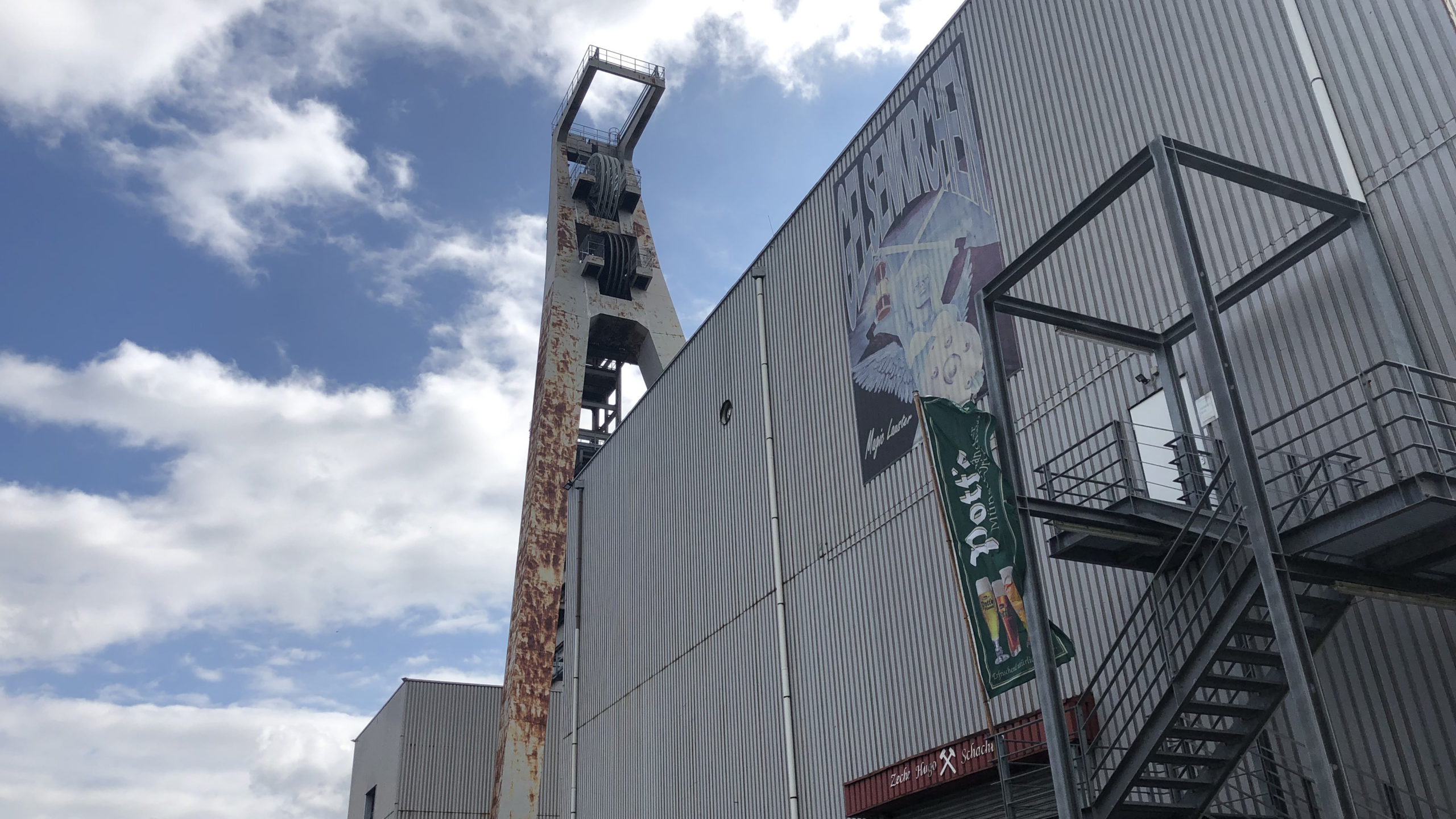
The impact of the industry’s departure is hard to overstate, though not because it suddenly left thousands of coal miners out of work: The process was purposely managed in such a way as to prevent mass layoffs, with many veteran workers going into early retirement and younger miners retrained for other professions. But the slow disappearance of Gelsenkirchen’s major industries has contributed to the current high unemployment in less direct ways: The lack of a concerted effort to build up future-oriented industries as coal and steel declined, for example, plays a big role in the lack of good quality jobs today.
“When you have such a massive industry that was so dominant, you have to counter it with something else and not simply hope the structural change from heavy industry to a services-based society will just happen over time,” said Delia Bösch of the Zollverein Foundation, housed in a former coal mine and UNESCO World Heritage site in neighboring Essen. “In the Ruhr region, that didn’t really work… that process began here very late, and as a result we’re still a region defined by high unemployment.”
Equally important, although less tangible, is the resulting form of multicultural coexistence that is unique to the Ruhr region. Many people pointed out that this area is the closest Germany has to a little America: Everyone who lives here came from somewhere else in search of work and a better life for themselves and their families.
Even if some of the mines have been closed for decades, that social contract still stands at the core of the city’s identity. “Ever since this city has existed… people have worked together,” Malte Stuckmann, the CDU’s candidate for mayor, told me in his office one morning. “It didn’t matter at all what your nationality was because underground that didn’t count for anything. That was, that is, the core DNA of our city.”
The Ruhr region is the closest Germany has to a little America: Everyone who lives here came from somewhere else in search of work and a better life for themselves and their families.
In recent years, however, that sense of multicultural solidarity has faced new challenges. While the rise of the AfD and an increase in anti-foreigner sentiment in Germany is most often traced back to the influx of refugees from Syria and the Middle East in 2015 and 2016, that process actually started a year earlier in 2014, when the European Union introduced freedom of movement for citizens of its newest southeastern members, Romania and Bulgaria.
When people talk about problems with integration in Gelsenkirchen or about misusing Germany’s social benefits, they rarely speak about the thousands of Syrian refugees who came to the city. They talk instead about the thousands of immigrants from Romania and Bulgaria, primarily from the Sinti and Roma minority. Approximately 36 percent of Gelsenkirchen residents have a “migration background,” meaning they or at least one of their parents were born abroad; of those who’ve come from outside Germany, approximately 8 percent are from Romania and another 4.5 percent came from Bulgaria.
Integrating those communities has proven challenging, far more than with most of the new arrivals from Syria: Where refugees are provided with language courses, financial help and other resources to help get their bearings in Germany, those coming from within the EU don’t have access to such things—although they are entitled to work here. Many remain in closed communities, learning little to no German and not always sending their children to school. What’s more, basic rules aren’t always followed, meaning sometimes people leave their trash out on the street or even throw it out the window.
Venetia Harontzas, who as head of the local community center Lalok Libre works primarily with Sinti and Roma children, called the work of integrating this community in particular “a Sisyphean effort.” Hints were on display while we spoke at the center one morning, with Harontzas constantly interrupted by requests or questions from fellow staff, volunteers and others stopping by.
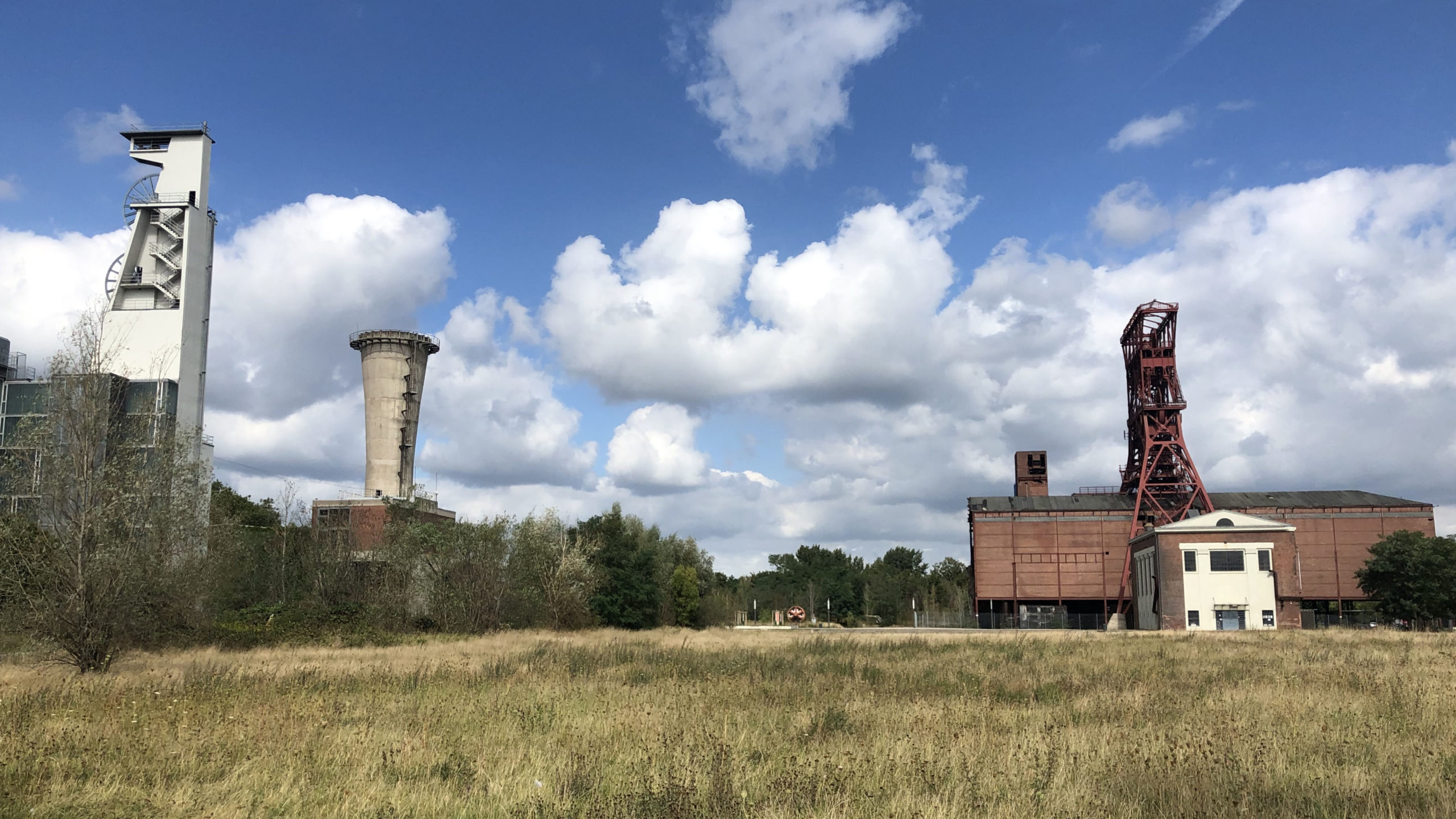
Many of those who’ve come to Gelsenkirchen in recent years, Harontzas explained, come with a vastly different set of cultural norms, little to no experience living in an urban environment, and, as frequent targets of discrimination in their own societies, often far lower educational levels than, say, refugees from Syria. Young girls are expected to marry at 13 or 14, often having half a dozen children by their mid-20s; spousal abuse is common. Getting people to adjust to a culture and system vastly different than the ones in which they were raised takes time and patience, she said—far more than most in politics are willing to give.
“It’s a long process, and it will take a long, long time,” she said. “But eventually it will work—maybe in the second and third generations.”
For some, these very real issues contribute to a sense that the long-standing social contract in the city—people came from elsewhere, but work hard and take part in society—no longer functions the way it should, and that elected officials don’t take it seriously enough. That, said Jörg Schneider, a member of the German Bundestag and the AfD’s mayoral candidate in Gelsenkirchen, is the primary reason people turn to his party here.
“People in Gelsenkirchen are seeing that it’s not good for the city,” he said. “We’re anyway a poor city, and the people who come here mean that even more of the city’s budget is being redirected. The streets are dirty, trash is thrown out of windows—these are simply things that bother many, many people here.”
Speaking with Schneider’s rivals from different parties, I didn’t get the sense they were unaware of or unconcerned by such problems. In fact, many of the things they said were fairly similar: That more needs to be done to fix things, integrate people who’ve recently arrived and ensure everyone can live happily and peacefully together. It was mainly just that the AfD is louder about it and made it the central focus of their campaign.
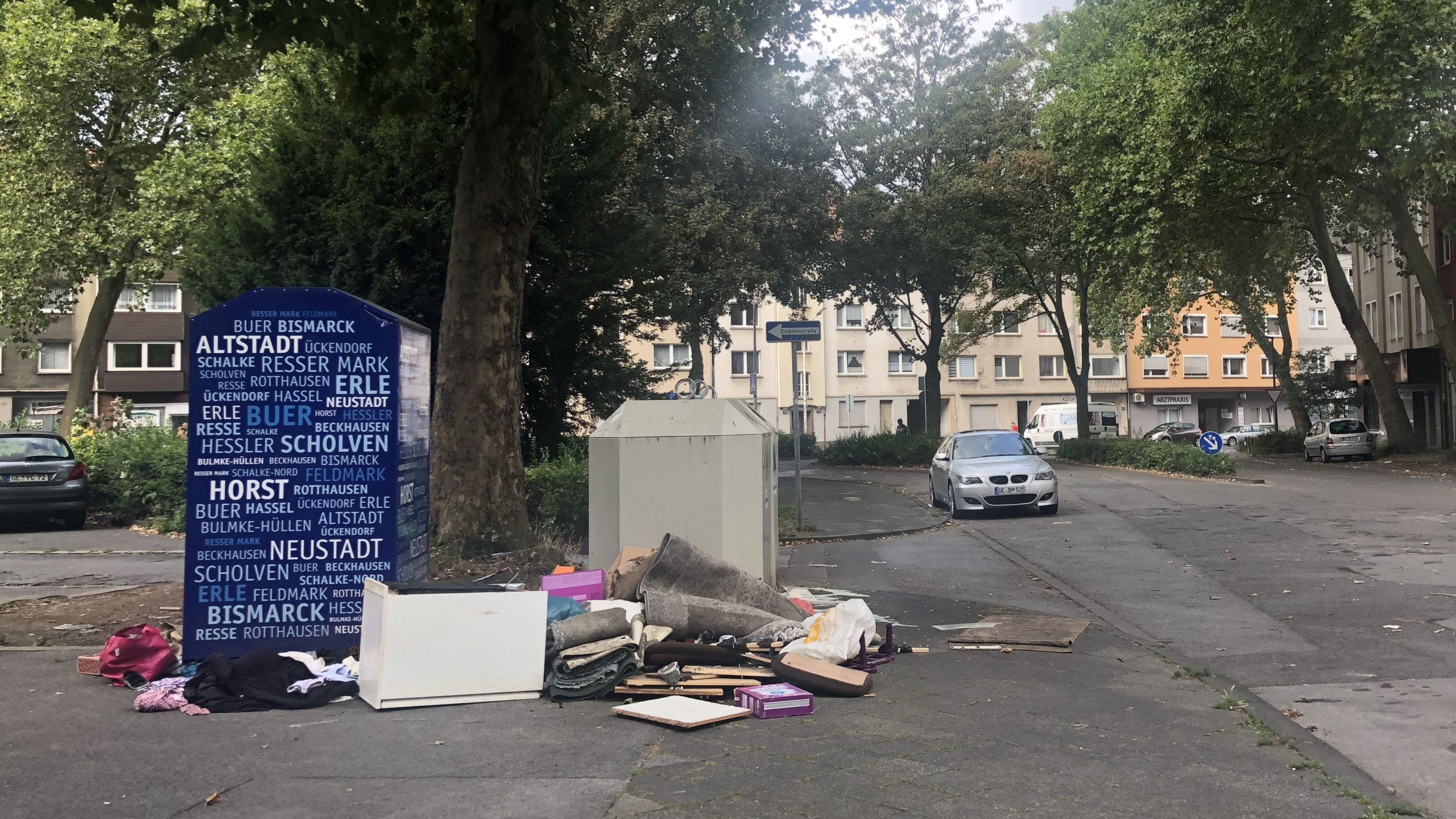
The head of the city’s integration council, Melek Topaloglu, believes having an “international history” in her family has always been a strength, not a weakness. But the arrival of newcomers wouldn’t have been so hard for some to swallow if they hadn’t already been unhappy with the way things were going: “People are simply dissatisfied,” said Topaloglu, a member of the SPD. “And when you add a new group of people to this dissatisfaction, of course people are saying, ‘Okay, there’s so much money there for them, so much being done for them, so many projects—we’ve been forgotten.’”
“When a society opens itself up, that opening is always connected with fear,” she added. The AfD, she said, “plays with that fear… that you will open up, but then be cast out.”
* * *
All of this has combined to create a fundamental shift in the political party landscape in Gelsenkirchen, which was on display in the Sept. 13 elections. The SPD, which as the party of the working class used to win as much as 80 percent here, took in just 35 percent for the city council (compared with 50 percent in 2014). Two smaller parties were the beneficiaries: The AfD, which went from 5 percent in 2014 to 13 percent this year; and the Greens, who jumped from 6 percent to 12 percent.
On the first Saturday in September, I stopped by the AfD’s stand in the southern district of Rotthausen to speak with some local-level candidates, which showed the extent to which the party has drawn supporters from various political parties in the city (especially the SPD). About a half-dozen party candidates and supporters stood on a street corner next to shops and cafes, handing out bright blue leaflets to passersby and chatting jovially among themselves.
Of the five I spoke with, two were former SPD members; another had come from the CDU, while yet another had even previously voted for the Greens. What they had in common was a sense that traditional politics in the city weren’t adequately addressing the concerns of its citizens—particularly when it comes to the demographic shifts and challenges of integration.
Jörg Schäfer, an insurance salesman and candidate for the AfD in the Schalke neighborhood, left the SPD last year largely because he felt the party wasn’t taking those issues seriously—and that by refusing to speak or work with the AfD entirely, its members were making it clear they didn’t want to change. “In our party I can use my voice—I have a say,” he said of the AfD. “For me it was important that a democratically elected party shouldn’t be shut out, be put down, be bullied.”
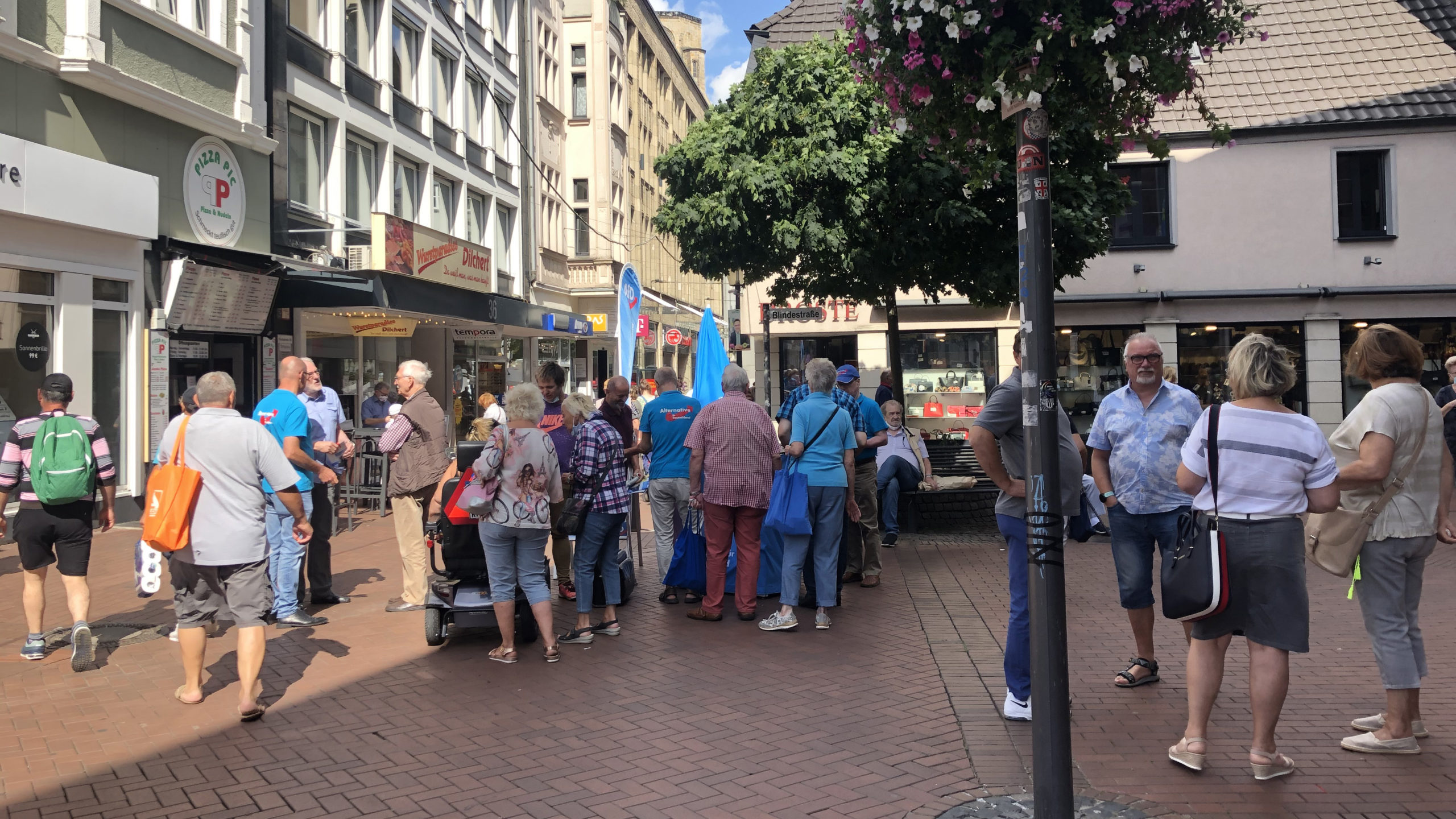
Enxhi Seli-Zacharias, the AfD’s no. 2 candidate for the city council, moved to Gelsenkirchen from Albania at age 6. She said she believes true integration into German society—with its language, culture and values—is the only way for a multi-ethnic society to function well.
“Immigrants need to see integration as a requirement,” she told me. “We can’t simply follow the motto, ‘The doors are wide open, everyone is welcome.’ There needs to be a give and take, and integration can only work when that balance holds.”
Among the AfD’s voters, some were driven by concerns about such issues, and have stuck with the party because they’ve been bothered by the way voicing their views draws scorn and alienation from others.
Detlef “Magic” Lauster, a former coal miner and local singer of traditional German Schlager music, had been a longtime SPD voter until he, too, began feeling—as many AfD voters have described to me over the years—“a bit foreign in my own country.” He was unhappy with the way Chancellor Angela Merkel had opened his country’s borders to refugees. When he agreed to perform at an AfD campaign event during state-level elections in 2017, he was immediately decried as a Nazi and a fascist—and stopped being invited to perform anywhere else.
“Things keep getting worse—and when you complain, then the response is always: Nazi, Nazi, Nazi,” he told me one rainy afternoon in his living room, German guitars displayed on the walls around us. Top politicians “tell me and people who think like me that we’re not wanted… And then comes a party that says, ‘We want Heimat, we want things to be like they were before, and we want things here to be good again.” (“Heimat,” as I wrote earlier this year, means “home” or “homeland” but evokes a deeper sense of belonging and identity.)
* * *
The same weekend I descended into the depths of a coal mine, I met an American friend who was in town from Berlin. Over drinks with a few friends in Ückendorf after the VR festival, we talked about how the city is the epitome of an underdog: Misunderstood, but with a sort of gritty determination to improve itself and prove its haters wrong. Throughout my month here, I was constantly impressed by the big and small ways people are working to make their city a better place, to address its problems step by step.
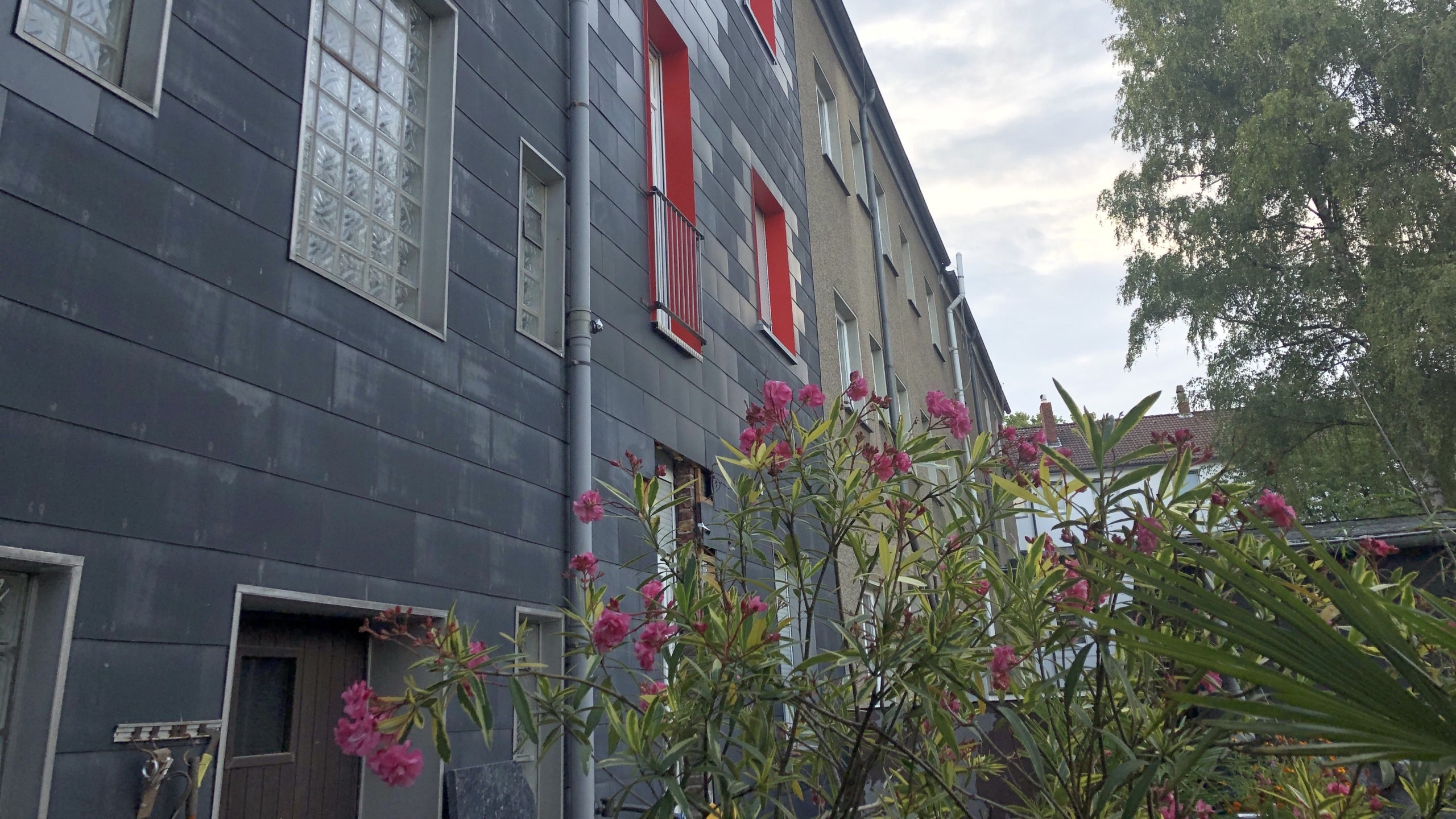
I’d become a small part of one such story thanks to my friend: A few months before I came to Gelsenkirchen, she had connected me to a group of locals who bought an apartment building in the city’s Bulmke-Hüllen neighborhood, a working-class area made diverse by new immigrants. The house had previously been an emblem of the problems the city faces: Trash, overcrowded apartments and closed immigrant communities.
The new owners wanted to renovate the building and turn it into affordable housing that would attract a range of people from multiple cultures and nationalities. My apartment, a small guest space on the ground floor, was the first to be finished, and I was the first to live in it. Nearly every weekday morning, I heard workmen arriving and picking up where they’d left off; although their progress is slow, I watched the apartment across from mine gradually transform from a construction site into something that, soon, will be someone’s home. I hope sometime in the not-so-distant future to return to see the rebuilding finished and get a glimpse of the community it’s intended to foster.
Some look at Gelsenkirchen’s image problem and real challenges and primarily offer criticism and taglines, rather than tangible solutions. But there are others asking what they personally can do to make things better, even just in some small way. Harontzas’s efforts with young Sinti and Roma youths, my hosts’ efforts to improve their neighborhood, Herzmanatus’s museum memorializing the place in which he and many others spent decades toiling—these are all examples of the determination, optimism and goodwill I saw across the city.
One afternoon about halfway through my time in Gelsenkirchen, I met Olivier Kruschinski, a lifelong Gelsenkirchener who has led more than 250,000 people on Gelsenkirchen-specific tours and helps run a foundation seeking to revitalize the city’s Schalke neighborhood. Sitting on benches in St. Joseph’s Church in Schalke, his voice echoing through the eaves, Kruschinski put it this way: “Complaining rather than doing something is very German, but it’s especially pronounced in Gelsenkirchen. I’ve always been someone who says let’s do something instead of complaining—let’s get on with things and see what we can change.”
He sees Gelsenkirchen a little bit like an ugly duckling. Everyone tells it how bad, poor, dysfunctional it is, enough so that the city’s residents have begun to believe it themselves. But we all know the end of that story: The ugly duckling grows up and realizes it’s actually a beautiful swan. If Gelsenkirchen is an ugly duckling today, I asked, when does its swan moment arrive—and what will it take to get there?
“The next 10 years will be crucial for Gelsenkirchen: Can we get out of this internal lethargy?” Kruschinski told me. “When you always see the glass as half-empty instead of half-full, you have an attitude problem. That’s our biggest issue. It’s a vicious cycle… and somehow you need to break through that.”

